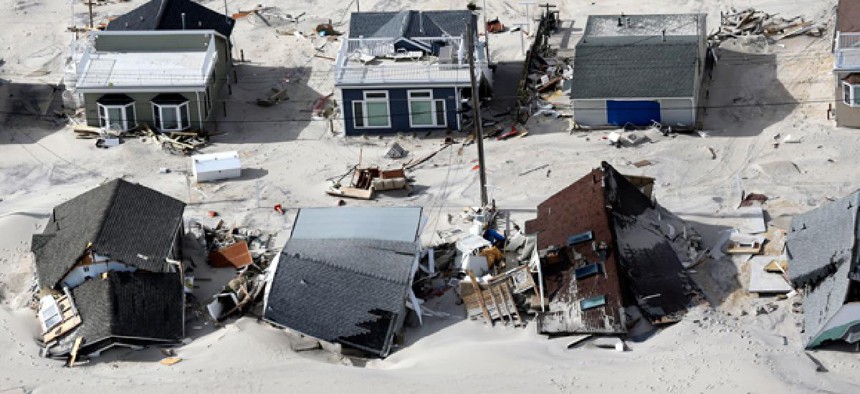
Damage in the wake of superstorm Sandy in the central Jersey Shore area of New Jersey Mike Groll/AP
Would we leave disaster-prone cities in the absence of FEMA?
One economist asks if the absence of federal funding would improve the way cities prepare for natural disasters
Hurricane Sandy highlighted a number of problems that U.S. cities face in the era of climate change. Development has pushed up to the coastline in a way that strikes some as "foolish."Plans for sea walls and storm protections have been met with a lack of urgency. A push for urban resilience, in general, can't afford to wait any longer.
U.C.L.A. economist Matthew Kahn, author of Climatopolis, wonders if these failures have something to do with the comforting presence of federal disaster relief. While it's great that FEMA has helped so many people in New York and New Jersey, perhaps an unintended consequence of this support is that communities haven't adequately prepared for such disasters themselves — either by moving to higher ground, or by investing their own local money in sufficient flood barriers.
In other words, might the absence of federal bailouts actually improve the way cities adapt to rising sea levels?
"We've learned the hard way that the probability of terrible storms has increased, perhaps because of climate change, and that this should trigger investment in self-protection that reduces the impact of these storms," says Kahn. "But if you expect these bailouts, that chips away at investing in resilience. It's a disincentive."
Over at his blog, Environmental and Urban Economics, Kahn recently posted a "tough love" thought experiment: How would New Jersey rebuild the coastline if the state knew that FEMA aid wasn't available in the future? He predicts a combined response from both government and citizens alike. State and local leaders would change zoning laws to discourage risky coastal construction, and coastal residents would take precautions like moving inland to get out of harm's way.
NEXT STORY: Analysis: A perfect new mission for Eric Holder






